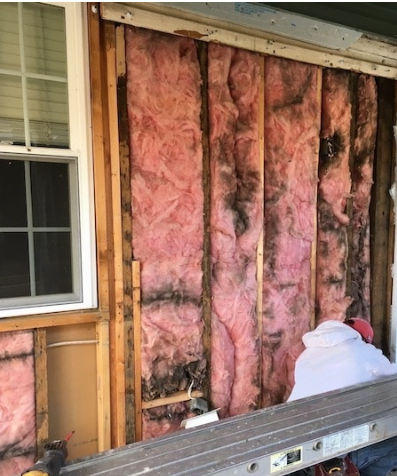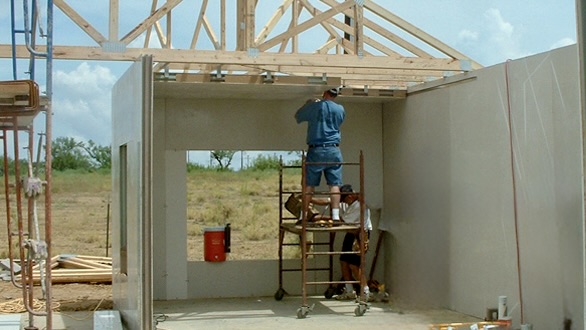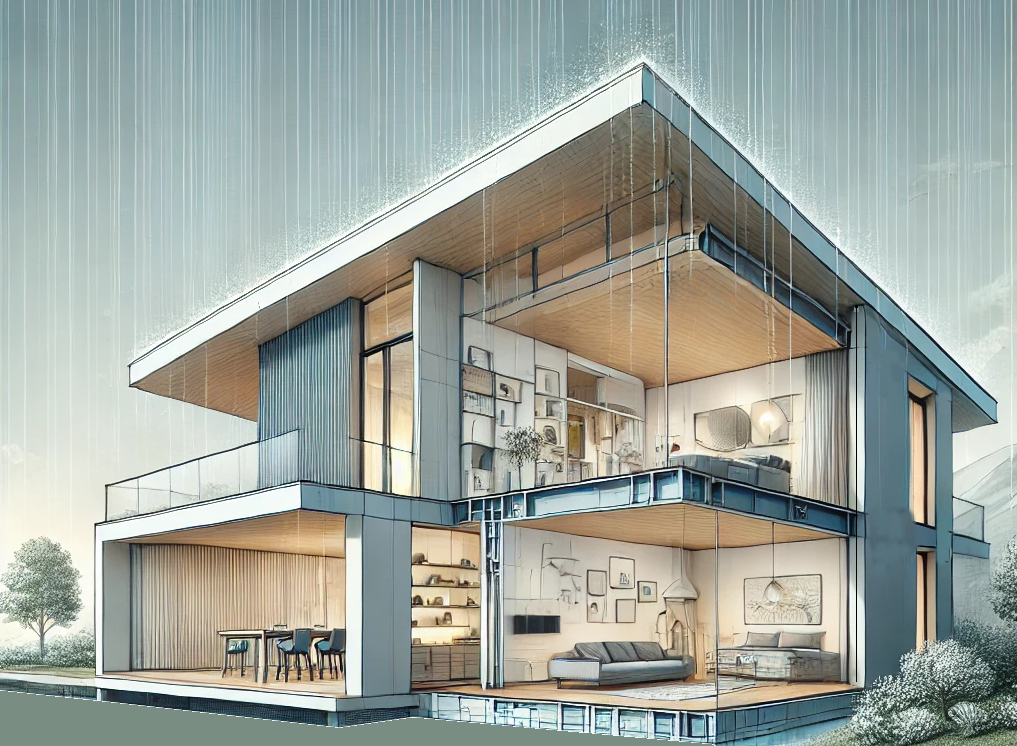1. How Water Vapor Moves Through Walls
In a stick-and-brick home, the wall assembly typically consists of wooden studs, sheathing, insulation, a vapor barrier, and cladding. Despite these layers, water vapor can penetrate the wall assembly through two primary mechanisms:
- Diffusion: Water vapor naturally moves from areas of high humidity to low humidity, passing through permeable materials like drywall, wood, and fiberglass insulation.
- Air Leakage: Imperfect seals around electrical outlets, windows, and gaps in the framing allow humid air to enter the wall cavity.
Once water vapor enters the wall, it can condense into liquid water if it encounters a surface below the dew point temperature. This is particularly common in colder climates, where warm indoor air meets a cold exterior wall but also in warmer climates using air conditioning.
2. What Happens Inside the Wall?
When water vapor condenses inside a traditional wall, it creates a moist environment that can lead to several problems:
a. Mold and Mildew Growth
Moisture provides the perfect breeding ground for mold and mildew. These not only damage the structure but can also cause indoor air quality issues and health problems for occupants.
b. Wood Rot and Structural Decay
Wooden studs and sheathing are highly susceptible to rot when exposed to moisture over time. This weakens the structural integrity of the home, potentially leading to costly repairs.
c. Degraded Insulation Performance
Most conventional insulation materials, like fiberglass batts or blown cellulose, lose their effectiveness when exposed to moisture. Water displaces the air pockets responsible for insulation, significantly reducing the material’s R-value. R-value ratings are typically determined under ideal laboratory conditions using completely dry test samples. However, in real-world installations, batts often contain at least 1.5% moisture, which can reduce their R-value by as much as 35%.
3. Why Does Water Reduce Insulation Efficiency?
The insulating properties of a material depend largely on its ability to trap air, which is a poor conductor of heat. When water enters the insulation:
- Thermal Conductivity Increases: Water conducts heat about 25 times faster than air. A damp insulation layer becomes a thermal bridge, allowing heat to escape much more quickly.
- R-Value Declines: A study showed that wet fiberglass insulation can lose up to 50% of its R-value, significantly reducing the energy efficiency of the home.
For example:
- Dry fiberglass batt: R-value of ~3.2 per inch.
- Wet fiberglass batt: R-value drops to ~1.6 or less per inch.
This means homes with water intrusion not only lose heat faster but also require more energy for heating or cooling.
4. Environmental Impact of Water Vapor in Traditional Walls
Beyond efficiency, water vapor in stick-and-brick walls has broader environmental and economic consequences:
a. Higher Energy Bills
Reduced insulation efficiency means HVAC systems work harder, leading to higher energy consumption and costs.
b. Increased Carbon Footprint
More energy usage translates to higher carbon emissions, especially in homes reliant on fossil fuel-based heating systems.
c. Waste and Resource Use
Damaged walls, insulation, and framing often need replacement, creating waste and consuming more raw materials.
5. Addressing the Problem: Lessons from Modern Construction
Modern building methods and materials offer solutions to mitigate the impact of water vapor:
a. Airtight Construction
Using airtight membranes and tapes can drastically reduce air leakage, minimizing the movement of humid air into wall assemblies.
b. Vapor Control Layers
Advanced vapor barriers, like smart vapor retarders, adjust their permeability based on humidity levels, allowing walls to dry out while preventing excessive moisture accumulation.
c. Closed-Cell Insulation
Insulations like closed-cell spray foam are impervious to moisture and have a high R-value (~6.5 per inch), maintaining their thermal efficiency even in humid conditions.
d. SIPs and MgO Boards
Structural Insulated Panels (SIPs) with non-permeable cores and MgO boards are excellent at blocking vapor while providing superior insulation and fire resistance.
Conclusion: The Case for Moisture-Resilient Design
Water vapor in traditional stick-and-brick walls is a silent but significant threat to energy efficiency, indoor air quality, and structural longevity. By understanding how water impacts insulation and adopting modern building practices, we can create homes that are more efficient, durable, and healthy.
For homeowners and builders, the key takeaway is clear: invest in materials and methods that control moisture, preserve insulation performance, and protect the environment inside the wall—and beyond.



